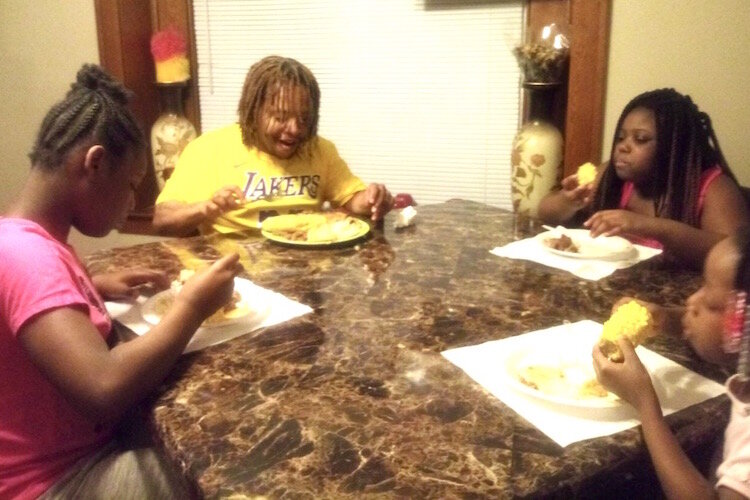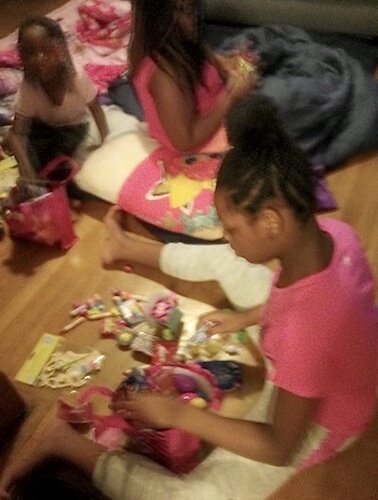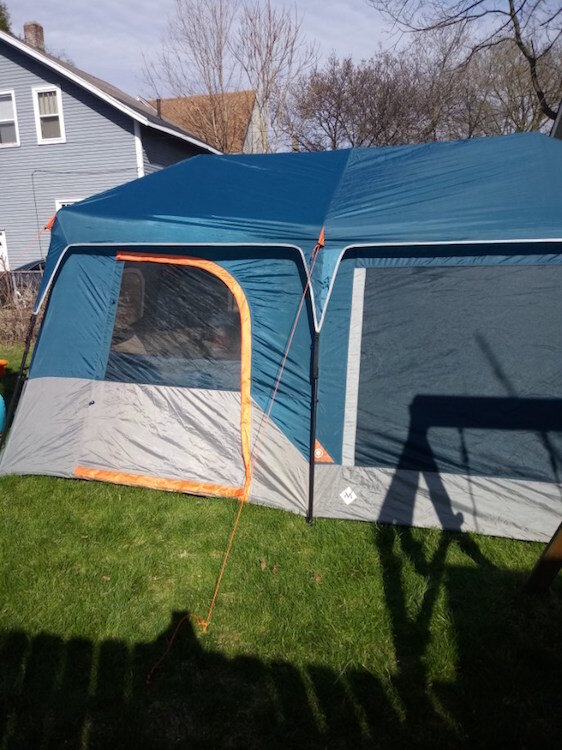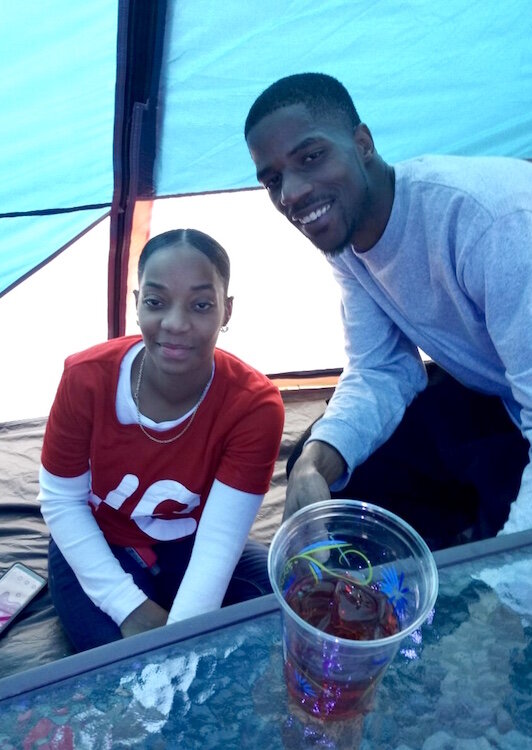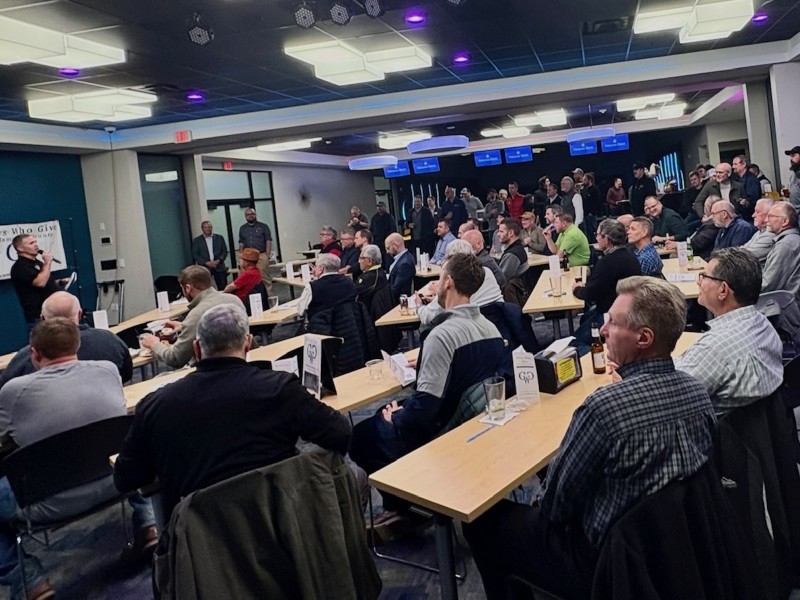‘I thought it was the flu,’ Kalamazoo survivor says as COVID-19 strikes blacks at high rates
As the coronavirus strikes a disproportionately high rate of African Americans, a Kalamazoo medical authority says those who don’t have obvious symptoms may suffer through, believing they have the flu.
For most of April, Michael Wilder had the entire second floor of his southside Kalamazoo home to himself. But the 46-year-old husband and father didn’t enjoy it.
Once a day he would slump off the bed he usually shares with his wife and fall onto a pallet of bedding she arranged on the floor. He was too weak to stand.
“I would roll off the bed onto the pallet,” Wilder says. “She would change my sweaty sheets. They were drenched wet. You could wring them out. She would change them wearing gloves and a mask, take them downstairs, put them in the wash and bring me up new ones. Then she would throw away the gloves and mask and put on new ones to come and check on me.”
She and his two youngest daughters, ages 7 and 11, slept downstairs in the living room.
“My daughters weren’t even allowed to come upstairs to their own room,” Wilder says. “My wife made them a big pallet and (with schools closed to prevent the spread of the coronavirus) she was playing games with them. I wanted them not to worry about me.”
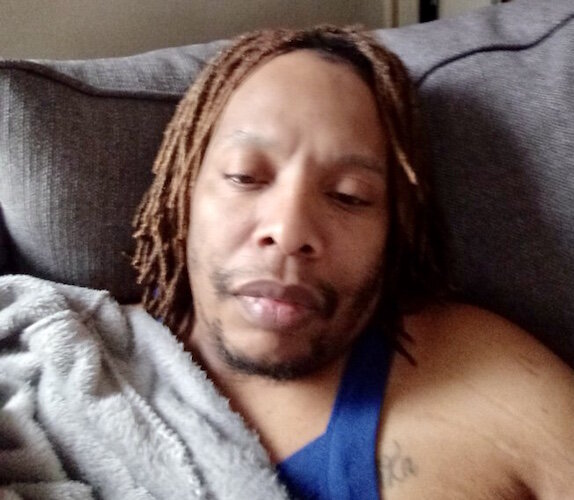
But they did.
They watched him suffer through more than two weeks of chills, including three straight days with fever, a complete loss of appetite and strength, and the uncomfortable feeling that there was something inside his chest and face. He says he didn’t cough much and never had a shortness of breath or trouble breathing. But he lost his senses of taste and smell.
Self-quarantine is no fun
“You know how you feel right before you throw up?” he asks. “I would get that feeling when I tried to put any food in my mouth.”
With no desire to eat, he dropped 12 pounds in the first week. Now, almost two months after symptoms of the coronavirus suddenly made it a struggle for him to climb the stairs to his bedroom, Wilder says he feels a lot better but is still too weak to do 10 push-ups. Before March 14, he enjoyed being able to do 50 or 100 without stopping.
Wilder is 5’3” tall and now weighs about 164 pounds He is an insulin-dependent diabetic. And he is African-American.
“I thought it was the flu,” Wilder says of the sickness when it struck.
“This particular virus is disproportionately affecting African-American people and individuals from low-income backgrounds,” says Denise Crawford, president and chief executive officer of the Family Health Center of Kalamazoo. “… There’s a huge disparity among African-Americans and this disease.”
Wilder says he had just heard of the coronavirus (COVID-19) but didn’t fear it before the March 14 weekend, as schools were being closed by order of the governor. “We had heard if you get it, you’ll be on a respirator and you might die. That’s mostly what we knew about it,” he says.

The disproportionate numbers
Through Wednesday (May 6, 2020), 541 people had tested positive for coronavirus in Kalamazoo County, according to statistics from Kalamazoo County Health and Community Services Department. Of those, 80 have been hospitalized and 22 have died. Of that count, while African-Americans make up less than 12 percent of Kalamazoo County’s population, they account for 30.1 percent of those who have contracted the virus and 13.6 percent of all those who have died in the county.
“The state stats show whereas African-Americans make up 14 percent of the population of the state, they make up 37 percent of the individuals diagnosed with COVID and more than 40 percent of the deaths,” Crawford says.
Authorities have attributed that to African-Americans having a disproportionately high rate of pre-existing health conditions (including high blood pressure and heart disease), inadequate access to health care, and social inequities that have kept many in service industry jobs (where there is greater exposure to affected people and less opportunity to work from home).
Crawford also says African-Americans and individuals in lower-income situations are often not in a position to quarantine themselves at home, which is among the key preventative measures. “Isolation and quarantine are not really possible if you live in a household with three generations,” she says as an example.
Some may be asymptomatic
Wilder was on the job when he says the sickness hit him. He works as a support staff member at Kalamazoo Covenant Academy, an alternative school that strives to help at-risk young people ages 16 to 22 to advance their education, find jobs and lead meaningful lives. He is also coordinator for Kalamazoo’s Group Violence Intervention strategy, a collaborative of community members and law enforcement to address criminal offenders about their futures and provide resources to help deter them from other crimes.
Wilder says he was driving home a young man he mentors in the GVI program when, “On the way home, it hit me like a brick. Bam! As I pulled away, my body started to feel real heavy. I called my wife. Once I got into my house my body was so heavy I thought I was going to pass out. So I climbed up my stairs, got into bed, and passed out. I woke up two hours later drenched in sweat.”
He says “When I thought I had the flu, I wasn’t that scared because I knew what the flu was fixing to do – five days and that would be it. But on the sixth and seventh day …”
Crawford says it is very likely that lots of people will contract COVID-19 and think it’s the flu.
“Eighty-five percent of the individuals who contract this virus will experience very common flu-like symptoms for 14 days,” she says. “And then those symptoms will dissipate and they will be fine. Or they will be asymptomatic. They won’t have symptoms. They will have the virus, they will carry the virus and they will be able to pass the virus on to other people for 14 days and then they will be completely fine. However, that remaining 15 percent is where the challenge really presents itself.”
Those are typically people with pre-existing conditions such as heart disease, hypertension, obesity, and asthma. The virus may be deadly in combination with some conditions.
How to get checked
Wilder says he struggled with the sickness for two weeks before his wife, Dominique, drove him to the Family Health Center on Alcott Street for help. “I was so sick,” he says. “I was sweating and shaking.”
He says he had a fever, had lost his senses of smell and taste, and had no energy. “It was a struggle for me to go to the restroom,” he says.
At the health center, he was immediately referred to Bronson Methodist Hospital. Emergency Department staff at the hospital asked about his symptoms, took a blood sample, and tested him for the flu. “One nurse came in and said, ‘You have coronavirus,’” he says. But he says the physician who treated him was not specific in his diagnosis. After test results were negative for influenza, he says he was given information about COVID-19 and told to self-quarantine at home for 14 days – to avoid contact with his family and others. That was on March 28.
More than two weeks later – still confined to his bedroom — he says, “I was still sick but I was starting to feel better.” He was able to eat Ramen noodles. But says he wanted to be rechecked for the disease.
“How do I know if I’m still contagious?” was the question he wanted answered when he headed back to the Family Health Center on April 14. “I wanted to get checked out.”
He says he was required to make a video or telephone appointment. During his telephone appointment, a doctor asked a slate of questions such as: Do you have a fever? And do you have taste and smell? The doctor cleared him and said he should no longer be contagious. But Wilder wonders how he could be cleared without ever seeing the physician or being tested.
Testing has become more available
Crawford says that in mid-March the Family Health Center had fewer than 50 COVID-19 tests at its disposal to serve an active patient roster of 43,000 people for the entire season. So those tests were only being used, “If we felt that we had an individual where we needed to test them and it was absolutely critical,” she says.
There are many things that medical authorities cannot yet answer because the disease is very new and answers have not yet been found, she says. But Family Health Center staffers strive to have good communications with patients, she says.
The testing situation changed in April as the health center became one of 13 testing centers linked with the NxGen MDX Laboratory in Grand Rapids and was authorized by Michigan Gov. Gretchen Whitmer to expand drive-thru testing in areas where there have been high numbers of COVID-19 cases.
They are also working with the Michigan Department of Health and Human Services and the Michigan Primary Care Association. Data from testing centers are expected to help officials “understand and address the spread of COVID-19 while ensuring those who test positive get prompt medical guidance,” according to the Family Health Center website.
Dr. Aaron Lane-Davies, chief of quality at Bronson Medical Group, says the availability of testing and testing supplies has been expanded and the U.S. Centers for Disease Control and Prevention has updated and expanded COVID-19 testing priorities to include anyone with symptoms consistent with COVID-19 infection.
“Currently, if we have a patient in our Emergency Department who is exhibiting symptoms for COVID-19, they can be tested at the discretion of the care team,” he says. “This is a change from the policy that was in place in March. Following the guidance provided by the CDC at that time, and with a limited supply of tests available, we were only testing symptomatic patients who needed to be admitted to the hospital.”
If an individual is exhibiting symptoms consistent with the virus, which include fever, chills, coughing, shortness of breath, and a loss of taste or smell, he says, “We are asking them to contact our Bronson Care Advisors at 269-341-7788. Once it is determined that they meet the criteria for testing, they will be directed by appointment to one of our curbside testing sites for a specimen collection.”
The Family Health Center initiated drive-thru testing by appointment on April 17 and has continued to do testing at various locations for people experiencing symptoms. (Testing is available by calling 269-488-0804 and passing a pre-screening. More information is available here.)
Priority for testing has been given to symptomatic healthcare workers, patients in congregate facilities like nursing homes who have symptoms, people over 65 with symptoms, first-responders with symptoms, front-line caregivers with symptoms, critical infrastructure workers with symptoms, hospitalized patients and people with underlying health conditions who have symptoms.
How did this case start?
Wilder says he thinks he contracted the virus in mid-February on a bus trip in Illinois. He drove to Chicago to take the bus trip to a juvenile correctional facility in St. Charles, Ill. A group of about 30 men, most in their 60s, were traveling to mentor young men sentenced to lengthy prison terms. The man who would be the keynote speaker when the group arrived says Wilder was apparently one of five men on that trip to be stricken with COVID-19.
“No one had ever heard of the coronavirus,” Kenny Jackson says, speaking of the men planning the trip in February. Jackson was an educator for many years in Covert, Flint, and Kalamazoo, including working as assistant principal at Loy Norrix High School in Kalamazoo from 1995-1999. He is now retired and lives in Chicago.
He says a member of the church group that sponsored the trip was coughing badly at a planning session two weeks before the Feb. 15 sojourn. “He had chills, shortness of breath, and was coughing into a towel,” Jackson says.
Although that man said he felt much better later and went on the trip, he apparently spread the sickness to others, Jackson says.
“On that bus, four people contracted COVID-19,” Jackson says. “But we didn’t know it.”
He says they have all recovered but he now has five former students, a retired teaching colleague and a fraternity brother who are or have struggled with COVID-19.
Sharing the experience
Wilder says he is glad to share his experience with COVID-19 but doesn’t think many others are talking about having the disease. He says African-Americans, in particular, are likely to worry that people will shun them.
Crawford says she’s seen African-Americans on two ends of the spectrum. At one end are those who are not taking the potential sickness seriously, think COVID-19 is a hoax, or think that, at some point, the disease will pass. At the other end are those who are deathly afraid and fear COVID-19 may have been created to wipe out blacks and poor people.
“My communication has been very, very direct,” Crawford says. “This disease is very real, contrary to various things we’ve heard. It is very real and it is very complex. The thing that is most complex about it is it is new. And we as the medical community don’t understand it.”
But there is no need for hysteria, she says. She advises that there are three ways the virus can enter your body, through your eyes, nose, or mouth. “It will not absorb through your skin,” she says. But respiratory droplets that come from people as they talk, sneeze, or cough are microscopic.
“That’s why we’re telling people to wear a mask that covers your nose and mouth,” she says.
She also recommends:
• Wash your hands – “Most transmissions take place via the hands,” she says.
• Clean surfaces – “This virus can live on surfaces for weeks. You can’t clean enough. … It is five times more contagious than the flu.”
She says, “You need to be smart enough to know this is real and it is killing African-Americans at a disproportionate rate.”
Into the future
Wilder says he and his family are now careful to wear facemasks, maintain social distance from others, and are taking other precautions to prevent the spread of COVID-19.
He missed his daughter Dyamond’s 11th birthday celebration on March 30 and his wife’s birthday on April 6, which is also their seventh wedding anniversary. They have been together for about 12 years and married for seven.
He was able to have a family member bring a tent and a bouncy inflatable to help his wife and daughters celebrate those events outside. And he said he was able to see them from the window of his bedroom.
Wilder has six children in all. All are daughters. The two youngest, Dyamond,11, and Michiah, 7, are with him and his wife. An adolescent lives with her mother and the others are young adults who live in various locales.
“I feel very excited to have survived this thing,” Wilder says. “There’s a lot of people who have died from it. So for me to have survived it, I feel very blessed. I feel like a butterfly coming out of a cocoon. I want to be a better husband. I want to be a better father. I want to be a better teacher at Covenant Academy, a better outreach worked for GVI, a better Christian. I want to be better at everything in my life.”

